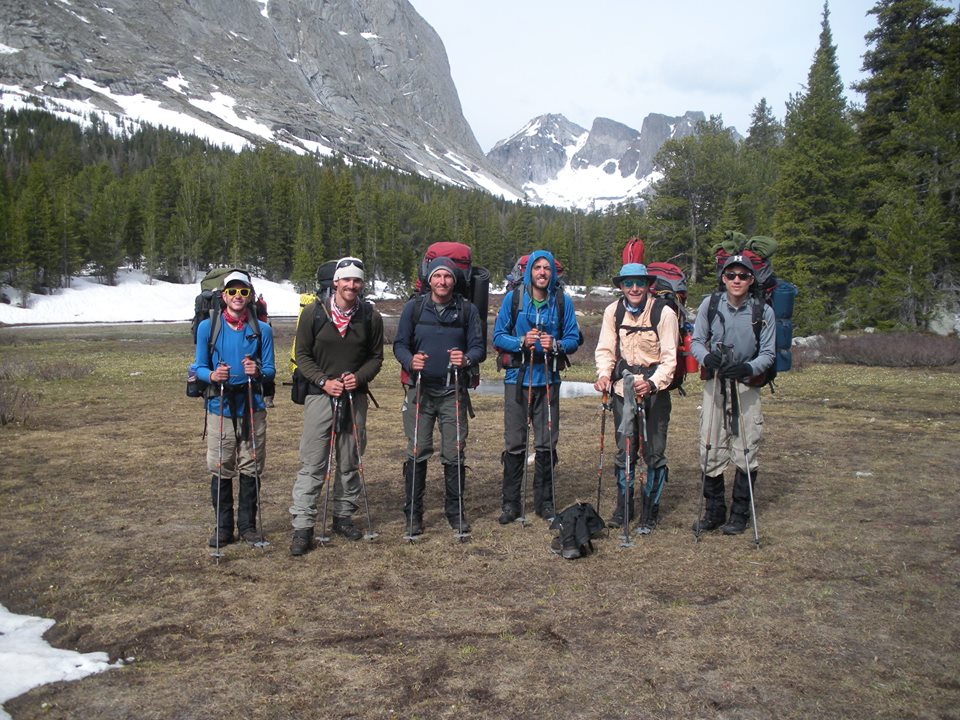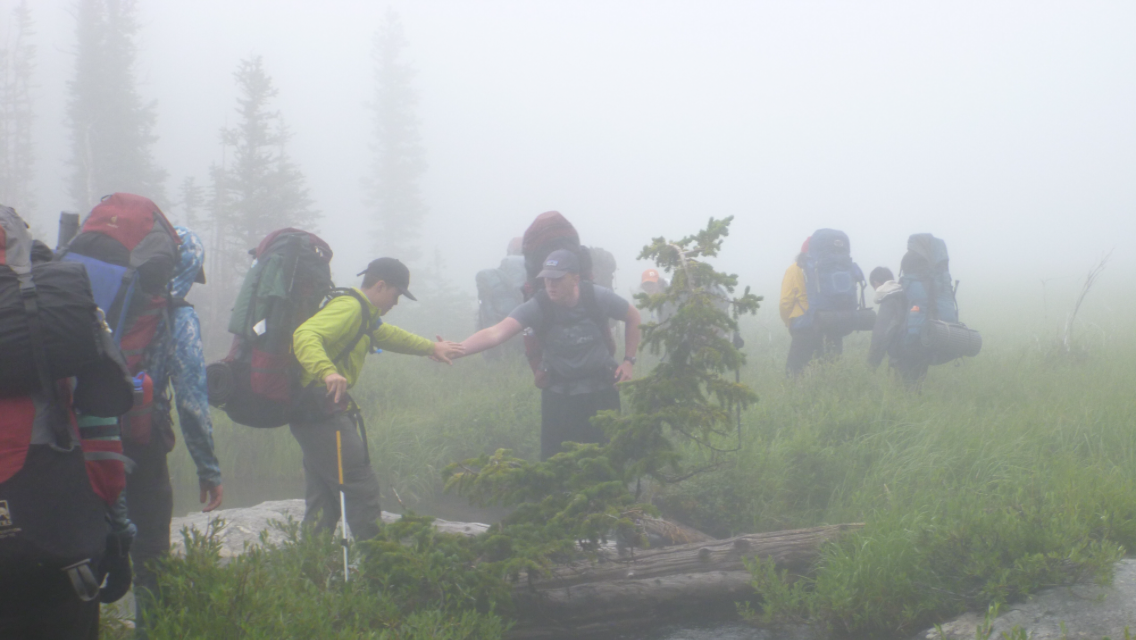
The Outdoor Educator group in the Wind River Range. Photo by Cooper Davis.
NOLSies pay for their courses in all sorts of ways, from savings to scholarships to working a summer job through high school to take the trip of a lifetime when they graduate. Some students even use their veterans benefits to fund their course.
We spoke with Navy veteran and graduate from a Rocky Mountain Outdoor Educator course and a Wilderness EMT course, Kevin Wilson, to learn about how and why he used his veterans benefits for NOLS and what he learned from his NOLS experiences.
I found out about NOLS through a NOLS catalog that I found on the coffee table of the environmental studies building at Rollins College in Winter Park, Florida.
I was right in the middle of earning my BA in Environmental Studies, and the summer loomed over the horizon. I was working as a seasonal park ranger for the Florida Park Service and pursuing my degree full time, so my days were quite busy. I still made time to contact NOLS and inquire about using the VA benefits I earned from serving in the Navy for just shy of five years.
I called the 1-800 number on the catalog, submitted my applications online, and was accepted to a Rocky Mountain Outdoor Educator course and a Wilderness EMT course.
The admissions teams for both of my courses were there every step of the way to answer questions about using my VA benefits; they spoke with me on the phone and answered all of my (sometimes ridiculously long) email inquiries with kindness, thoughtfulness, and precision.
I had to take a bit of a sabbatical from the State Park to come out to Wyoming, and it turned out to be the best decision I have ever made. I flew from Florida to Lander, Wyoming, and the next day was being outfitted with a backpack, sleeping bag, camp stove, bear spray, jackets, a climbing harness, rations, and…shocking for a Floridian…snowshoes! In June!

I spent 18 days hiking over 80 miles in the Wind River Range, learning from my classmates and instructors how to look out for avalanches, navigate through steep mountain terrain, find micro-invertebrates in crystal clear mountain streams, swim in freezing cold lakes, summit a 13,000-plus-foot peak, fly fish for trout, and set up a portable electric bear fence (to protect our food at night).
After the hiking portion of our course, we spent six days rock climbing. I learned how to place climbing protection like cams and C4s; that you should never confuse “sport” (climbing on fixed protection) and “trad” (climbing on protection you place yourself) climbing; found out new meanings for seemingly familiar terms like “pocket” and “jug”; and worked my way from shaking at the sight of a 5.6-rated route to confidently top roping a 5.10 (with just a little belay help from a buddy)! If that all sounds like a foreign language to you, it won’t after a NOLS course.
After over three weeks in the mountains, I rolled right into the Wilderness Emergency Medical Technician (WEMT) course at the Wyss Wilderness Medicine Campus in Lander.
Again, I was challenged every day with unfamiliar concepts like the focused spine assessment, treating high altitude pulmonary edema, and a host of other maladies and treatments that adventurers may encounter in the wild.

I lodged with 29 classmates in LEED platinum-certified buildings; said hi to families of mule deer grazing right outside my door every morning; hiked, ran, and swam in the beautiful red rock canyons and Popo Agie river; and was able to provide compassionate care for patients at the Lander Regional Hospital.
The depth of the curriculum, competence of the instructors, and sheer majesty of traveling through the Wind River Range, then living for a month in the Red Canyon at the Wyss Campus, all coalesced to forge memories and lessons that I go back to day after day.
I returned to Florida to work for the State Park after graduating from my WEMT course, but Wyoming was never far from my mind. I had surfed Wyoming, and longed for the crisp, dry mountain air as I toiled in the sweltering humidity of central Florida. I was back in Florida less than a year when I found a job opening at NOLS as an admission officer for WEMT students. I sent in my application about 20 minutes after viewing the announcement, and got a job offer a week later.
I now live in Lander and work for NOLS. I have been here for three months, and I have loved every minute of it. I work with great people who are working to instill an ethic of stewardship and care for our blue marble for future generations. It is a great honor to have been able to serve my country in the Navy and then use the VA benefits I earned to embark on the adventure of a lifetime: learning from, and now working for, NOLS.
[Editor's Note: post updated 5/14/2019]- Alumni
- Wilderness Emt
- Lander
- Nols Rocky Mountain
- Nols Financial Aid
- National Outdoor Leadership School
- Climbing
- Wmi
- Backpacking
- Backcountry
- Wilderness Medicine
Written By
Kevin Wilson
Kevin is a diaspora Floridian who likes climbing rocks, running, reading, and connecting with nature.



